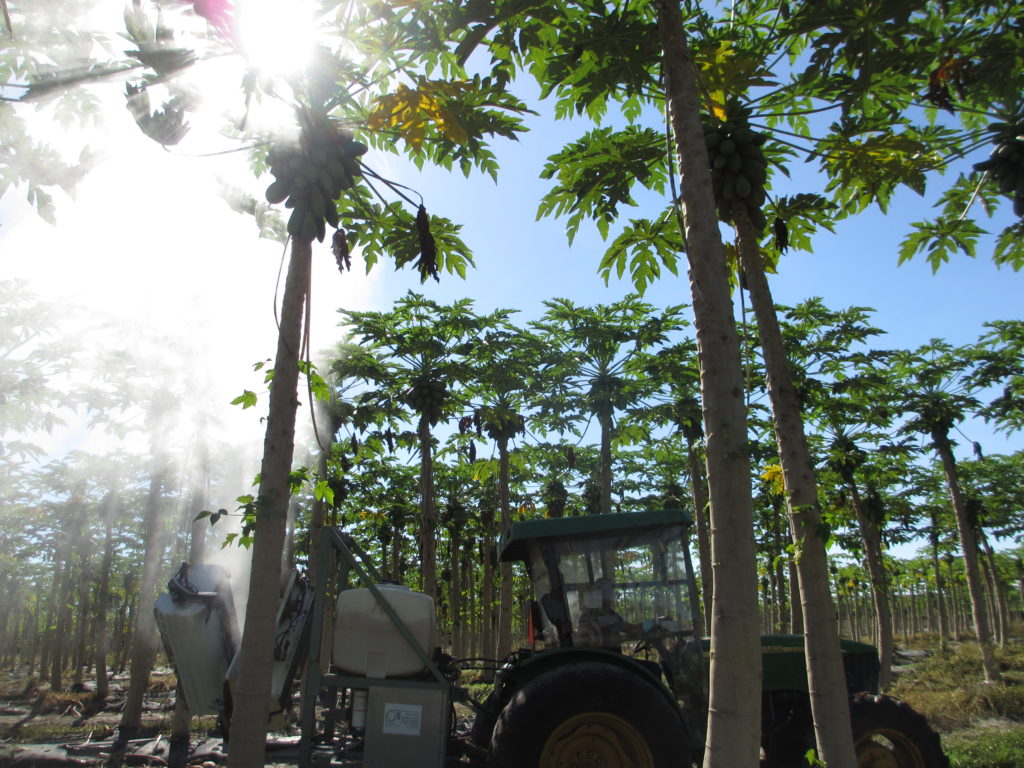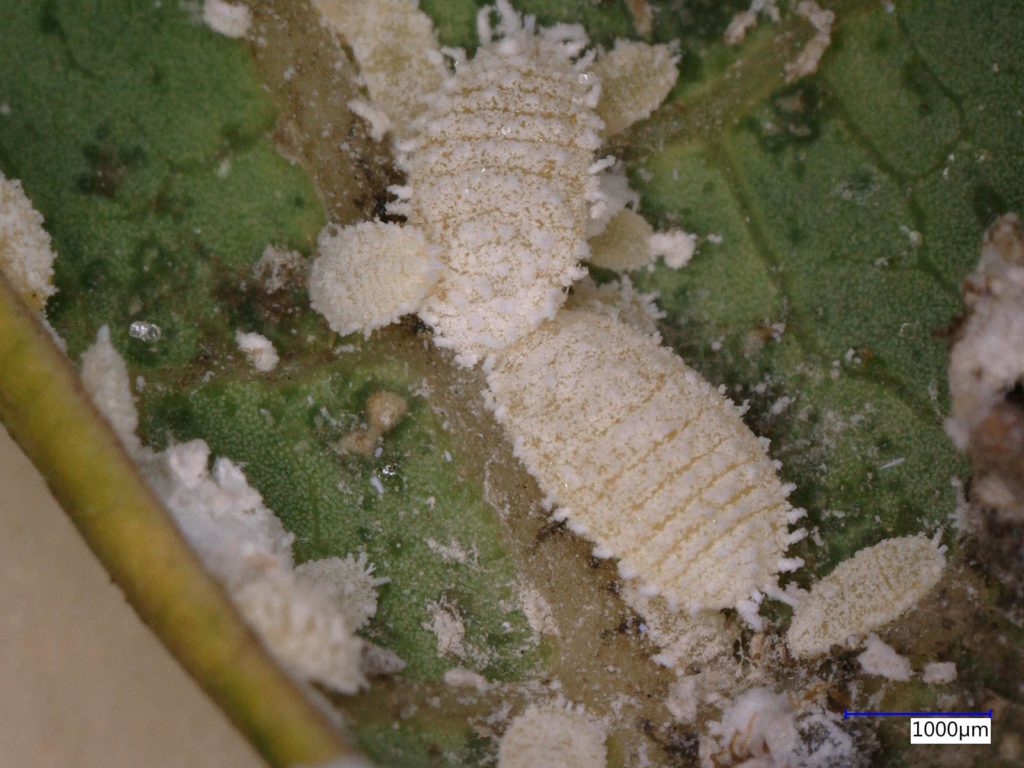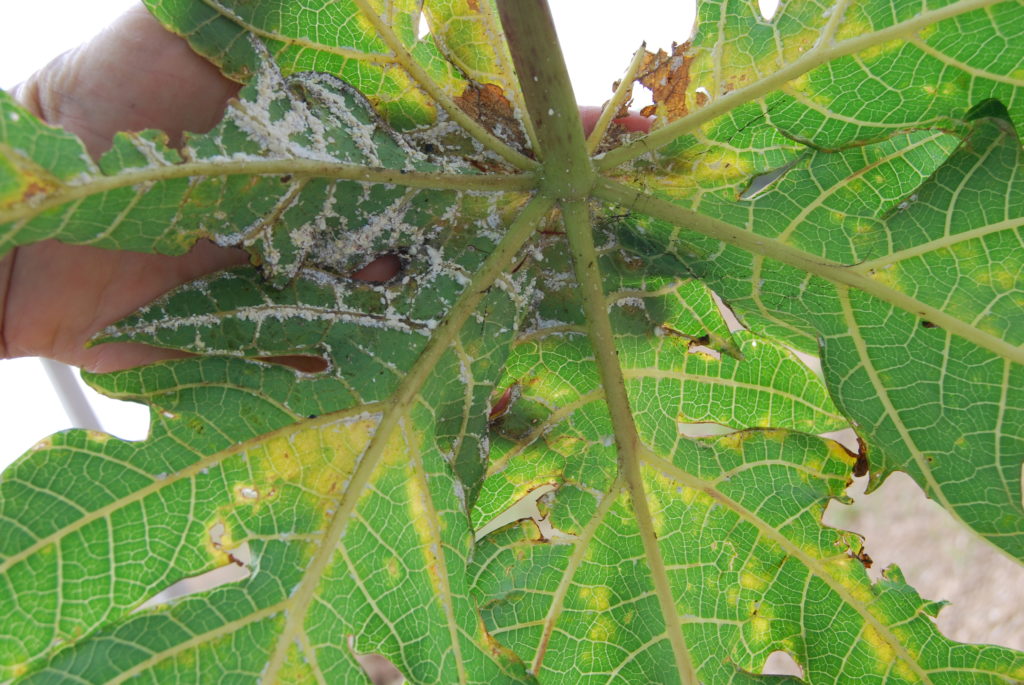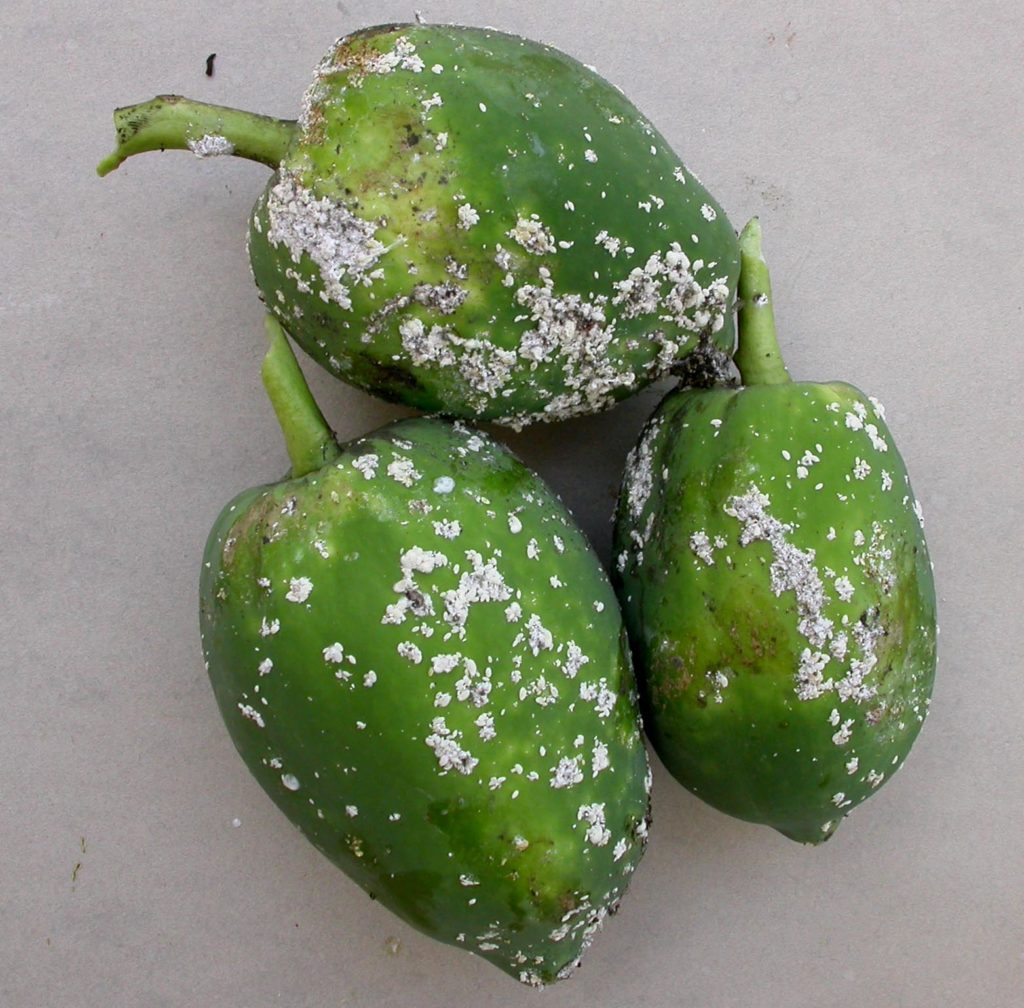The registration of the insecticide acetamiprid through IR-4 Project adds an important integrated management tool for control of papaya mealybug.

Even though the United States imports most of its fresh papaya from Mexico, the tropical fruit is grown domestically in Hawaii, Florida, Texas, California and Puerto Rico. Hawaii is the largest producer with over 10 million pounds harvested in 2018, according to the USDA National Agricultural Statistics Service. South Florida’s subtropical climate also allows papaya to be grown year-round.
Papaya mealybug challenges growers
The Florida climate that is ideal for growing papaya is also well-suited for the proliferation of insect pests, including the papaya mealybug (Paracoccus marginatus). Discovered in South Florida in 1998, papaya mealybug spread rapidly to other areas of the state. It is an economically important pest infecting both ornamental and food crops, including papaya, citrus, avocado, tomato, peppers and hibiscus.

“The papaya mealybug is a very difficult insect to control on papaya,” said University of Florida entomologist Daniel Carrillo. “It is more challenging to control on papaya than on other crops. The insect attacks the growing tips of the plant. This makes the insect very difficult to reach and to control. A large infestation of the mealybug will attack both the foliage and the fruit. The insect will kill the plants if it is not controlled. In terms of arthropods, spider mites and papaya mealybug are the most damaging to papaya.”
The papaya mealybug is a sucking insect that feeds on the plant sap in the leaves, stems and fruit. A toxic substance injected by the insect into the leaves causes chlorosis, leaf and fruit drop, plant stunting, a buildup of honeydew and eventually death. Heavy mealybug infestations can result in a buildup of a thick white wax that can cause the fruit to be inedible.
Finding an effective control
Another reason the papaya mealybug is difficult to control is there are few insecticides registered for use on this minor tropical crop. Carrillo said when an insecticide is found that can control the pest on minor crops, growers and researchers will submit a request to the IR-4 Project to expand the chemical label.

“Brooks Tropicals, which is a large tropical fruit producer headquartered in Homestead, Fla., made the request that the label for the insecticide acetamiprid be expanded for use on papaya,” he said. “I made the request for the insecticide studies be done through IR-4 Project for the registration use.
“I worked on the acetamiprid efficacy studies on papaya mealybug for a year. The efficacy trials, which were conducted at the university research station, were extensive. It involved growing the plants in shade houses and infesting them with the mealybug. The trials were conducted with the papaya variety ‘Red Lady’, which is the one most produced in Florida.”
Taking an integrated control approach
One of the challenges Carrillo faced while conducting the efficacy trials was a natural parasitoid that attacks the papaya mealybug.
In 1999 USDA initiated a biological control program for the papaya mealybug using several species of parasitic wasp collected from Mexico. Carrillo said the parasitic wasp Acerophagous papayae was introduced in Florida as one of the biocontrol agents.
“The wasp has established permanently in Florida,” he said. “The wasp in general works really well, but it does not provide 100 percent control. Sometimes in grove conditions the wasp doesn’t control the mealybug. For the acetamiprid efficacy trials it was particularly challenging to discriminate the effect of the parasitic wasp and the insecticide.”
Carrillo said papaya growers are also applying the biopesticide BotaniGard, which is the fungus Beauveria bassiana, to control the mealybug.
“Sanitation also plays a critical role in helping to control the mealybug,” he said. “Growers can use sanitation by removing plant residues on which the mealybugs can survive.

“The mealybug has multiple alternative hosts. There are probably more than 50 host plants. It is important to know if there are other host plants in the vicinity that are infested with the mealybug.”
Carrillo said it is important to register pesticides for use on tropical food crops because of the lack of registrations available.
“Because there are so few controls available, these chemical registrations can have a big impact for growers,” he said. “Since few insecticides work well against the mealybug, it is important that acetamiprid is used properly in the future to prevent resistance from occurring.
“The next step is to determine how to integrate the parasitic wasp into a control program with insecticides. We need to know when this wasp is more active to try to avoid affecting it. We need to determine the time of day applications should be made in order to come up with a strategy to minimize the impact on the wasp.”
For more: Daniel Carrillo, University of Florida, Tropical Research & Education Center, 18905 SW 280 St., Homestead, FL 33031; dancar@ufl.edu;
https://trec.ifas.ufl.edu/Tropical-Fruit-Entomology-lab/
PR# 11602 Papaya (Mealybug)
David Kuack is a freelance technical writer in Fort Worth, Texas; dkuack@gmail.com.
